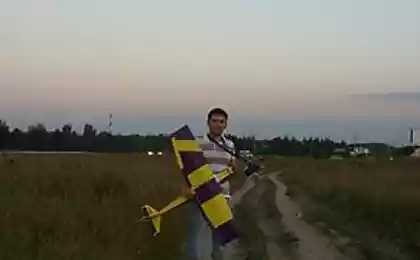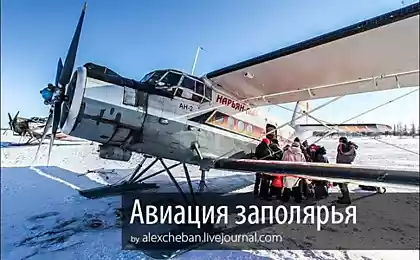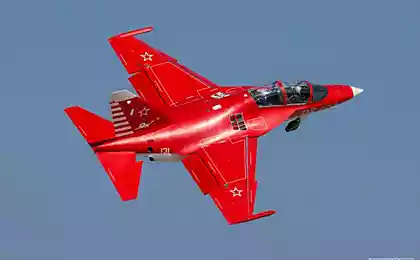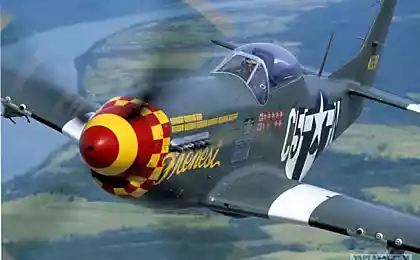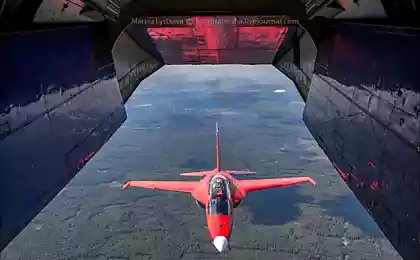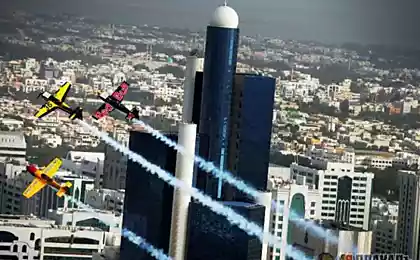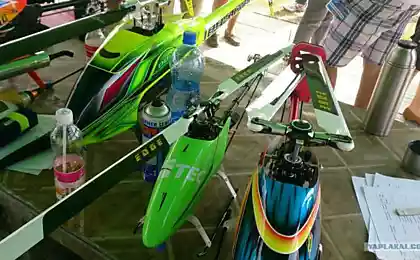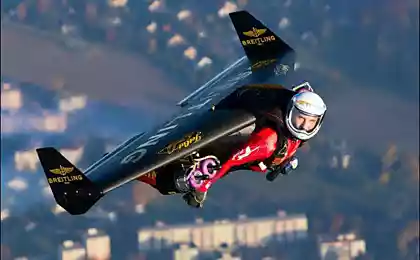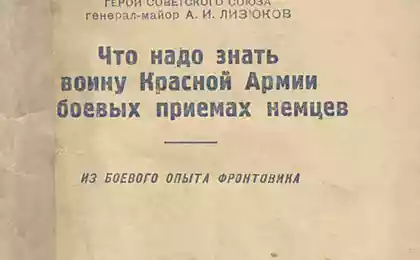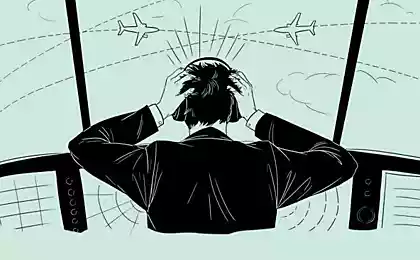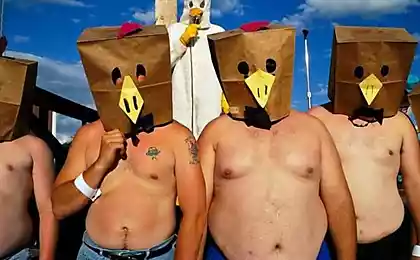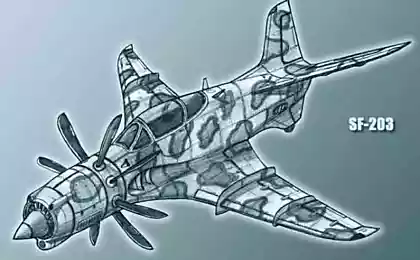1872
The most spectacular acrobatics aerobatics
One can hardly imagine anything more extreme and exciting than professionally made aerobatics. Today we want to tell you about the most complex shapes, their inventors and the history of these tricks.
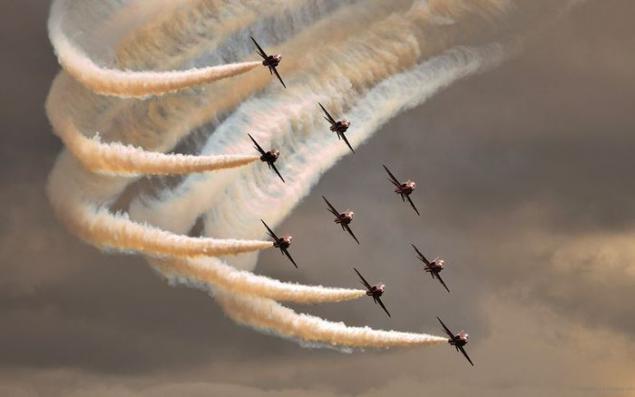
Bell Kvochura
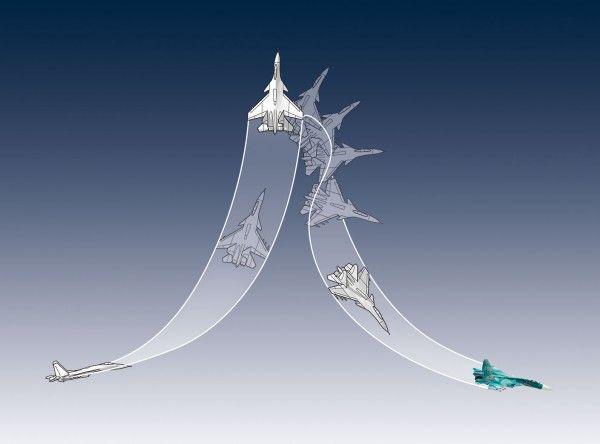
As
Airplane raises nose up at zero speed, and then tilts it down, simulating the movement of the clapper. Hence the name of the figure.
When
For the first time the figure was presented in 1988 at the Farnborough air show in English. At the helm of fourth-generation fighter MiG-29 sat test pilot Anatoly Kvochur.
Why
Initially, Bell was regarded as a maneuver in which a fighter becomes invisible to radar-guided missiles at the target. Today, this figure can be seen not in the battle, and during the performance of flight group "Swifts", "Russian Knights», «Rus».
Barrel
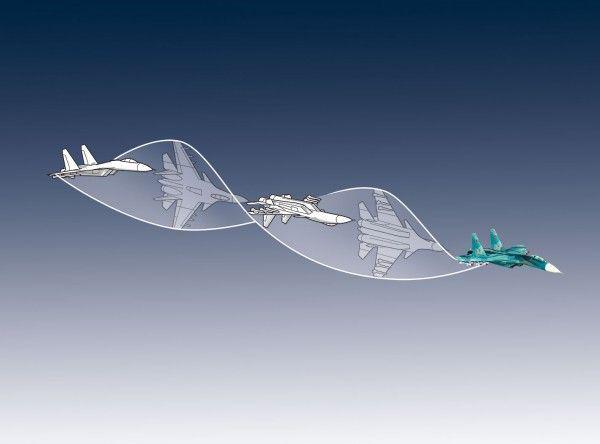
As
The plane is rotated around its horizontal axis through 360 degrees. Depending on the number of drum rotations is single, queen and multiple.
When
For the first time performed a maneuver American Daniel Maloney in 1905. During World War II, this figure has saved many lives.
Why
Three times Hero of the Soviet Union Alexander Pokryshkin once watched the flight of inexperienced pilots. One of them decided to make a barrel, but it has lost much speed and dived. At this point, the pilot flying behind it slipped forward and acrobat appeared on his tail. Pokryshkin and his colleagues figure dubbed "tubs" and repeatedly used the reception in the fight against the fascists aviation. Now the barrel part of a complex figure, running on competitions on aircraft sports.
Immelman
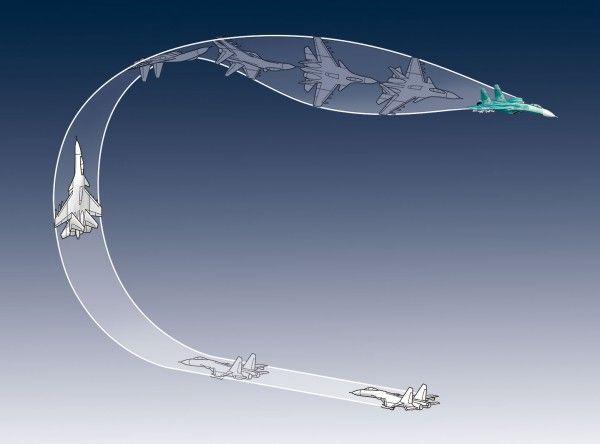
As
The plane makes a battle turn - half roll on top of the half loop.
When
The first figure is made on Fokker monoplane E.III 25-year-old German, Max Immelmanom in 1915 during the First World War. This maneuver allowed Immelmanu be above and behind the enemy aircraft, although they had previously been on a collision course. For the year flight Immelman shot down 15 enemy planes and pilots English only when he saw that the Germans took to the air, going to land. Why
Immelman figure began to teach at the summer school. And today it is part of the basic shape, which should be able to do all the military pilots.
Flat spin
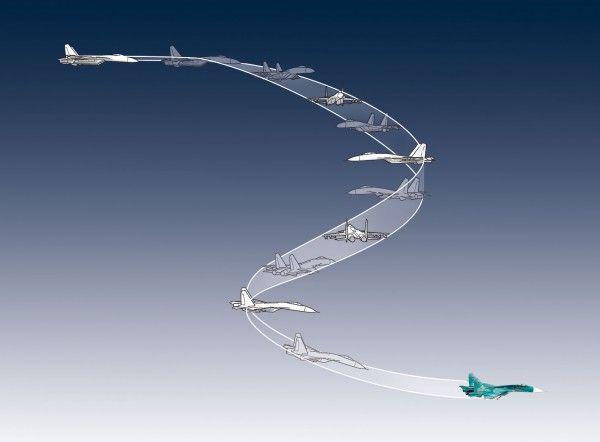
As
The plane drops a steep downward spiral of small radius.
When
At the beginning of the XX century, spin was the main cause of death of the pilots. It was believed that you can not get out of the corkscrew. But September 24, 1916, Konstantin Artseulov pilot on the aircraft Nieuport-XXI at 2,000 meters deliberately brought the plane into a spin and came out of him. The next day, the authorities filed Artseulov Sevastopol flying school report, which proposed to introduce a training program in a tailspin.
Why
Today, this once deadly figure fulfill all aviation educational institutions on screw machines, it is in the rules of the competition on the aircraft sports. But in Russia, pursuant to a spin on a jet fighter banned for safety reasons, they perform only a flat spin. Despite the fact that with a corkscrew learned to fight, he still carries life.
Kulbit
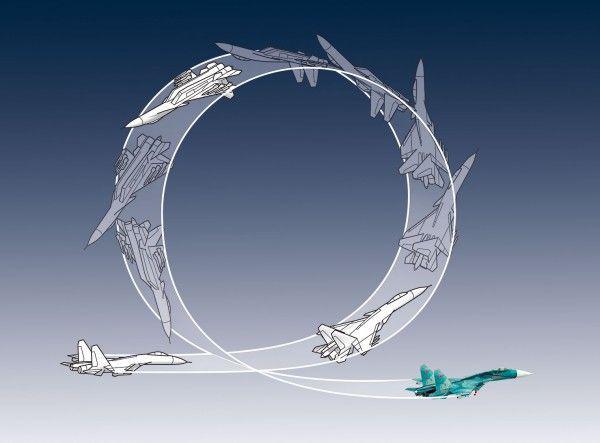
As
The figure at which the aircraft at low speed turns around its tail, forming a loop with a very small turning radius.
When
For the first time shown to the public on the Su-37 Evgeny Frolov in 1995 at the air show in Le Bourget.
Why
The figure is named after the ancient Indian weapon, which is a ring with a cutting edge interior. Kulbit can only be carried on aircraft with variable thrust vectoring. The figure has not been used during air combat. Her show during performances on vystavkax and aviation ppazdnikax proving aerodynamic perfection rocciyskix generation fighter 4+.
Hammerhead
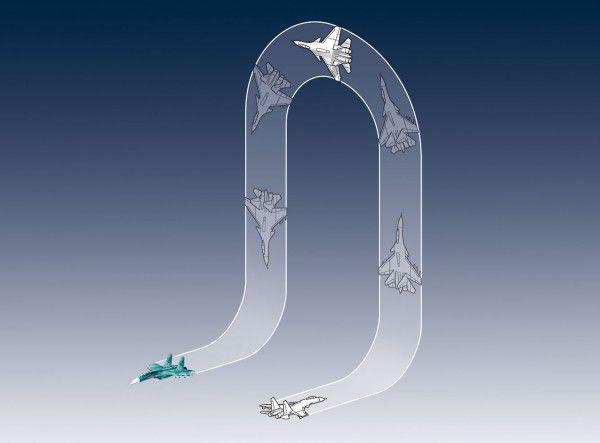
As
Plane candle goes up, hangs in the air, turning his nose to the ground, being sent down.
When
It is believed that the figure for the first time performed the German pilot, world champion in aerobatics and aircraft Gerhard Fieseler in the late 1920s.
Why
The use of this figure during air combat itself is tantamount to signing a death sentence. The plane hangs in the air, it is an ideal target for the enemy. But during a demonstration flight at the turn of the vertical causes a stir in the audience, because it looks very impressive. This figure is included in the set of exercises in the sport airplane, fighter jets but it will not do.
Figure Pugacheva
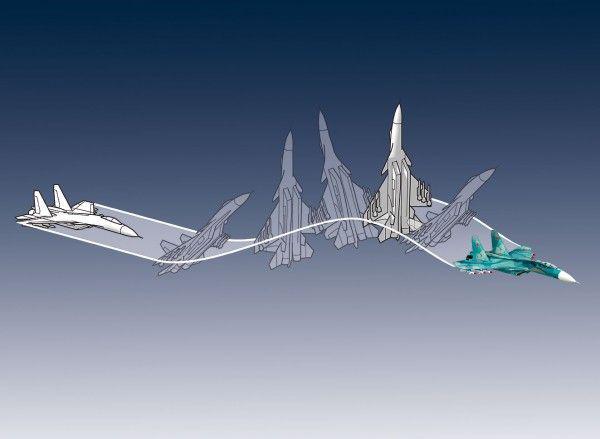
As
The figure in which the nose is raised up to 110 degrees (27-Su, Su-37 - 180 degrees) to the direction of movement, and then falls back.
When
The first was carried out in a test flight USSR honored pilot Igor Volk. The general public showed Viktor Pugachev cobra at the international show in Le Bourget in 1989. When Su-27 Russian pilot sharply pulled up the nose, the air show organizers decided that there was a failure in the system and the aircraft is going to fall. But the plane did not fell into a tailspin, and flew in the same direction. Pugachev for the development of new technology was awarded the title Hero of the Soviet Union, and the figure, despite the fact that was invented by another pilot, was named the first demonstrator.
Why
The maneuver is suitable not only for the care of the destroyer of the enemy, but also against missiles with infrared homing. Nevertheless, the cobra has not been used in combat.
Ranversman
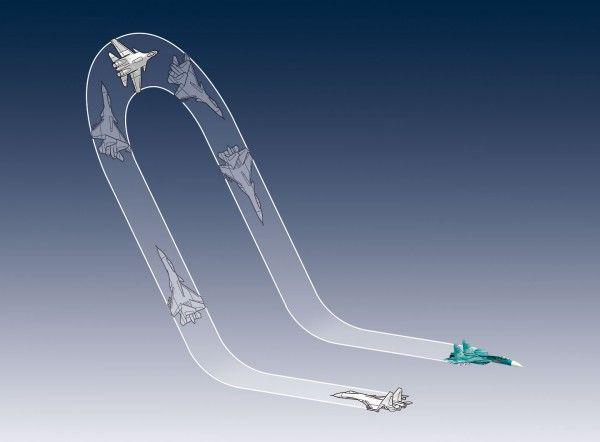
As
The figure is about the same as the Hammerhead but not hovering, and to turn on the hill (maneuvers when the aircraft climbs with constant inclination).
When
Presumably rollover (as translated from the French figure), or turn on the hill (under this name a figure known in Russia), appeared in 1930. The difference between the maneuvers and ranversman Hammerhead is that the plane away from the enemy coming collision course, not vertically, but at an angle of 50-60 °, on the hill.
Why
Those pilots who can deal with this complex figure who gains an advantage in battle. It is possible to apply it when attacking and counterattacking actions, it allows you to quickly change the flight direction without losing altitude.
Source: www.vokrugsveta.ru

Bell Kvochura

As
Airplane raises nose up at zero speed, and then tilts it down, simulating the movement of the clapper. Hence the name of the figure.
When
For the first time the figure was presented in 1988 at the Farnborough air show in English. At the helm of fourth-generation fighter MiG-29 sat test pilot Anatoly Kvochur.
Why
Initially, Bell was regarded as a maneuver in which a fighter becomes invisible to radar-guided missiles at the target. Today, this figure can be seen not in the battle, and during the performance of flight group "Swifts", "Russian Knights», «Rus».
Barrel

As
The plane is rotated around its horizontal axis through 360 degrees. Depending on the number of drum rotations is single, queen and multiple.
When
For the first time performed a maneuver American Daniel Maloney in 1905. During World War II, this figure has saved many lives.
Why
Three times Hero of the Soviet Union Alexander Pokryshkin once watched the flight of inexperienced pilots. One of them decided to make a barrel, but it has lost much speed and dived. At this point, the pilot flying behind it slipped forward and acrobat appeared on his tail. Pokryshkin and his colleagues figure dubbed "tubs" and repeatedly used the reception in the fight against the fascists aviation. Now the barrel part of a complex figure, running on competitions on aircraft sports.
Immelman

As
The plane makes a battle turn - half roll on top of the half loop.
When
The first figure is made on Fokker monoplane E.III 25-year-old German, Max Immelmanom in 1915 during the First World War. This maneuver allowed Immelmanu be above and behind the enemy aircraft, although they had previously been on a collision course. For the year flight Immelman shot down 15 enemy planes and pilots English only when he saw that the Germans took to the air, going to land. Why
Immelman figure began to teach at the summer school. And today it is part of the basic shape, which should be able to do all the military pilots.
Flat spin

As
The plane drops a steep downward spiral of small radius.
When
At the beginning of the XX century, spin was the main cause of death of the pilots. It was believed that you can not get out of the corkscrew. But September 24, 1916, Konstantin Artseulov pilot on the aircraft Nieuport-XXI at 2,000 meters deliberately brought the plane into a spin and came out of him. The next day, the authorities filed Artseulov Sevastopol flying school report, which proposed to introduce a training program in a tailspin.
Why
Today, this once deadly figure fulfill all aviation educational institutions on screw machines, it is in the rules of the competition on the aircraft sports. But in Russia, pursuant to a spin on a jet fighter banned for safety reasons, they perform only a flat spin. Despite the fact that with a corkscrew learned to fight, he still carries life.
Kulbit

As
The figure at which the aircraft at low speed turns around its tail, forming a loop with a very small turning radius.
When
For the first time shown to the public on the Su-37 Evgeny Frolov in 1995 at the air show in Le Bourget.
Why
The figure is named after the ancient Indian weapon, which is a ring with a cutting edge interior. Kulbit can only be carried on aircraft with variable thrust vectoring. The figure has not been used during air combat. Her show during performances on vystavkax and aviation ppazdnikax proving aerodynamic perfection rocciyskix generation fighter 4+.
Hammerhead

As
Plane candle goes up, hangs in the air, turning his nose to the ground, being sent down.
When
It is believed that the figure for the first time performed the German pilot, world champion in aerobatics and aircraft Gerhard Fieseler in the late 1920s.
Why
The use of this figure during air combat itself is tantamount to signing a death sentence. The plane hangs in the air, it is an ideal target for the enemy. But during a demonstration flight at the turn of the vertical causes a stir in the audience, because it looks very impressive. This figure is included in the set of exercises in the sport airplane, fighter jets but it will not do.
Figure Pugacheva

As
The figure in which the nose is raised up to 110 degrees (27-Su, Su-37 - 180 degrees) to the direction of movement, and then falls back.
When
The first was carried out in a test flight USSR honored pilot Igor Volk. The general public showed Viktor Pugachev cobra at the international show in Le Bourget in 1989. When Su-27 Russian pilot sharply pulled up the nose, the air show organizers decided that there was a failure in the system and the aircraft is going to fall. But the plane did not fell into a tailspin, and flew in the same direction. Pugachev for the development of new technology was awarded the title Hero of the Soviet Union, and the figure, despite the fact that was invented by another pilot, was named the first demonstrator.
Why
The maneuver is suitable not only for the care of the destroyer of the enemy, but also against missiles with infrared homing. Nevertheless, the cobra has not been used in combat.
Ranversman

As
The figure is about the same as the Hammerhead but not hovering, and to turn on the hill (maneuvers when the aircraft climbs with constant inclination).
When
Presumably rollover (as translated from the French figure), or turn on the hill (under this name a figure known in Russia), appeared in 1930. The difference between the maneuvers and ranversman Hammerhead is that the plane away from the enemy coming collision course, not vertically, but at an angle of 50-60 °, on the hill.
Why
Those pilots who can deal with this complex figure who gains an advantage in battle. It is possible to apply it when attacking and counterattacking actions, it allows you to quickly change the flight direction without losing altitude.
Source: www.vokrugsveta.ru



